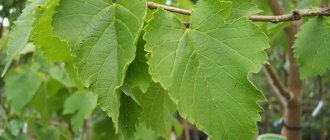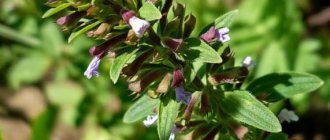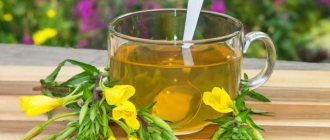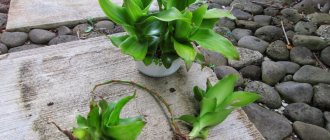What type of cabbage is used for medicinal purposes?
There are many types of cabbage, but cabbage is the most widely used. Cabbage is a biennial plant belonging to the Brassica or Cruciferous family. It is distinguished by large succulent leaves, which are used mainly for food.
In addition to cooking (recipes for cabbage dishes can be found here), cabbage (mostly white cabbage) is widely used in folk medicine for both internal and external use. This is due to the presence of a wide range of useful vitamins and accessibility.
Outdoor use
When treating mastopathy, there are several options for using cabbage leaves. Check them out.
Wash the cabbage leaf, grease it with previously melted butter, and sprinkle it with a little salt so that it releases a little juice.
Apply the sheet to the mammary gland, wrapping it with a dry cloth on top. The underwear should not be tight, so as not to put pressure on the breast tissue and thereby reduce the effect of the compress. Leave the sheet for 6-12 hours, and then replace it with a fresh one. Such cabbage compresses must be done within a week, leaving them overnight.
The second method is similar to the first, but in this case, instead of butter, spread the cabbage leaf with honey.
Finely grated beets (about 3 tbsp), mix with honey (1 tbsp). Spread this mixture on a cabbage leaf and apply a compress to your chest.
You can use only cabbage leaves for a compress, without lubricating them with anything. First, remove the thick veins from the leaf, beat it lightly with a hammer so that it releases the healing juice. Apply it to the mammary glands.
This method is especially good in the presence of pain. Grind the cabbage leaf (it is better to use a meat grinder or blender) into a homogeneous paste. Mix the resulting composition with three tablespoons of homemade kefir. Apply this mixture to gauze pads and apply to the mammary gland. It is necessary to replace raw materials several times a day.
We would like to warn you that there are no scientific medical studies confirming the effectiveness of cabbage leaves on mastopathy. But there is centuries-old experience of using this healing agent in folk medicine among women all over the world.
Chemical composition
The composition of white cabbage includes:
- carbohydrates (sucrose, fructose, glucose);
- carotenoids (organic pigments that color plants red, yellow and orange);
- thiocyanates (salts);
- thioglycoside progontrin.
The special value of cabbage lies in its diverse set of vitamins and elements, such as:
- ascorbic acid;
- thiamine;
- riboflavin;
- acids: nicotinic, folinic, folic, panthogenic;
- mineral salts of potassium, sodium, magnesium, iron, calcium;
- trace elements: tin, lead, silver, copper, iodine, etc.
Reference! 16 amino acids were found in cabbage. Thanks to its rich chemical composition, cabbage has taken an important place among traditional medicine.
Cabbage leaf compress
Let's take a closer look at the cases in which a cabbage leaf compress can alleviate the condition and how to make it so that all its medicinal properties are fully manifested.
It is recommended to apply cabbage leaves as a compress in the following cases:
- for arthrosis and arthritis,
- when hematomas appear,
- for various injuries and bruises,
- with boils and carbuncles,
- for frostbite,
- for pain in the spine,
- for neuralgia,
- for headaches,
- with tracheitis and bronchitis,
- for mastitis and mastopathy,
- for insect bites.
Photo
Below you can see a photo of green cabbage leaves:
Benefits and harms
Cabbage leaves are very beneficial for health. Fiber contained in fiber helps remove toxins from the body, lowers cholesterol, cleanses blood vessels and has a strong diuretic effect, eliminating swelling. Thanks to vitamin U, cabbage leaf is effective in the prevention and treatment of peptic ulcers.
Important! When treating ulcers, cabbage leaves are used only boiled.
Tartronic acid, which cabbage is rich in, promotes the process of weight loss by reducing the fat layer, by preventing the conversion of carbohydrates into fats. In addition to all of the above, cabbage leaf is effective for heartburn, diabetes, cholelithiasis, etc.
Harmful manifestations of the properties of cabbage leaves include:
- Reduced sperm production in men with frequent consumption of cabbage.
- Harm from peptic ulcer disease at a late stage.
- Negative effects on thyroid diseases.
Despite all the beneficial qualities of this vegetable, it is worth carefully studying the list of contraindications before including it in your diet. Allergy sufferers should avoid using cabbage leaves.
Read more about the benefits and harms of cabbage in this article.
Action and benefits of cabbage leaf
The juice of fresh cabbage leaves, due to the content of special phytonutrients, can accelerate the natural healing of wounds and various skin damage, it has an active antioxidant effect and has an intense anti-inflammatory effect.
Properly prepared fresh cabbage leaves are recommended by folk healers for external treatment:
- Bruises, bruises and hematomas;
- Frostbite and burns, including sunburn;
- Various injuries;
- Dental pathologies;
- Neuralgia and rheumatism;
- Frequent migraines;
- Renal type colic;
- Various diseases of the respiratory and digestive system;
- Arthritis, as well as arthrosis and other joint diseases;
- Bites of any insects and even animals;
- Suppuration, inflammatory processes, inflamed pimples and boils.
It is important to remember that a cabbage leaf compress can be used to treat any ailment only after consultation with the attending doctor and his approval of this procedure, since here the possible presence of pathologies of an oncological nature deserves special attention, for which the use of such treatment is prohibited. In all other cases (except for the presence of individual intolerance), external use of cabbage leaves will not cause harm.
To carry out a medicinal cabbage wrap or compress for boils, you can use the leaves of not only ordinary white cabbage, but also Savoy cabbage.
Step-by-step instruction
External use as a compress for children and adults
Knowing the beneficial properties of cabbage, it is important to use it correctly for treatment:
Late ripening cabbage is used for the compress, because... early does not have all the healing properties.- A leaf is separated from the head of cabbage and thoroughly washed with water. There is no need to remove the veins, because... they contain the most useful substances.
- The thickness of the compress should be at least 1 cm, so you can apply several leaves.
- When the required thickness is reached, a film is placed over the leaves.
- The compress is applied tightly to the sore spot and secured with a bandage.
Usually the sheet is applied overnight, but if there is no unpleasant odor, it can be left for a day. Do not be afraid if the leaves turn the color of blood or pus upon first use; you can use these secretions to monitor the healing process. The treatment is considered successful if the resulting color remains natural.
Against cough
You will need cabbage leaves and honey:
- The leaf is washed and briefly dipped in boiling water, after which it is smeared with honey on one side.
- The lubricated side of the sheet is applied to the chest or back, leaving the heart area open.
- The compress is secured on top with thick cloth.
Rarely, an allergic reaction to honey can occur.
Relieve swelling in the lower extremities
- For a compress for swelling, you will need the upper large leaves, which must be mashed or beaten with a meat mallet to release the juice. You can remove the veins so as not to experience discomfort from pressure on the skin.
- The finished leaves are applied to the shins and ankles, and fixed with film (if the compress is short-term) or with a bandage (if for the whole night).
Attention! It is not recommended to fix the compress with film at night, because it does not allow air to pass through and can lead to overheating of tissues.
For bruises
Crushed cabbage leaves are effective in removing bruises. They are applied to the damaged area and tightly fixed with an elastic bandage. For this procedure, take dense, fresh and, preferably, young cabbage leaves and crush them with a masher until a paste forms. It is the juice extracted from this vegetable that has a healing and cosmetic effect on the skin.
Compresses must be changed periodically, waiting time before applying. Helps with bruises and bruises, by breaking up a stagnant hematoma.
For a sore throat
Juicy cabbage leaves have long been used for purulent sore throat. They are applied to the tonsil area and changed every 2 hours. Cabbage is believed to be effective in drawing out pus from the throat and relieving pain. You can enhance the effect by lubricating your throat with honey before applying the leaves. It is advisable to begin procedures in the early stages of the disease.
For mastopathy
Before starting treatment, you need to know for sure that mastopathy is occurring. It is important to visit a doctor to confirm the diagnosis.
- Medium cabbage leaves from the middle of the head of cabbage are used for treatment. You can remove the veins and seals and let the juice out.
- The leaves are applied to the chest for the whole day (or night) and secured with a bra or bandage.
Whether cabbage makes breasts grow is discussed in this material.
For diathesis in children
Diathesis often occurs in young children, and is treated with cabbage leaves. To do this, the leaves are boiled in milk with the addition of bran, then thoroughly crushed, and the resulting pulp is applied to the affected areas for 10-15 minutes.
For arthrosis
Cabbage leaf wrap is effective in treating arthrosis. It is important to keep the joints warm; plastic film and wool are used for this.
Externally, as a face mask
Reference! Cabbage is extremely effective when used as a face mask. Fresh, pickled, white cabbage, and seaweed are also suitable.
There are many recipes and they are all aimed at eliminating skin problems (for example, acne, dryness, wrinkles). The simplest and most effective recipes include the following:
Well-washed, fresh, chopped cabbage leaves are thoroughly mixed with 1 tablespoon of sour cream and 1 egg yolk.- The resulting liquid greenish mass is applied to the skin of the face, excluding the area around the eyes. Leave the mask on your face for no more than 30 minutes.
The procedure is carried out up to 3 times a week and, if necessary, the effect is secured with a light face cream. The cream should be applied to dry skin, also avoiding the area around the eyes.
For oral administration
For internal consumption, the vegetable is fermented, boiled and juice is made from it. Before use, it is necessary to study contraindications. Cabbage broth is used for the prevention and treatment of diseases such as:
- constipation;
- diabetes;
- gastritis;
- avitaminosis;
- flu, etc.
It is very easy to prepare a decoction: 200 grams of cabbage are poured with 4 glasses of water and simmered over low heat for 15 minutes. Cabbage juice also promotes weight loss. All you need to do is drink half a glass of juice three times a day, half an hour before meals, which will dull the feeling of hunger and start the process of producing digestive enzymes.
How to carry out treatment
It is not difficult. Take a medium-sized cabbage leaf and rinse it well under running water. Then, on one side, which you will apply to the sore spot, make many small cuts and cuts, remove thick veins.
After this, wrap a cabbage leaf around the affected joint. Cover it with plastic wrap and wrap it with a woolen scarf.
This compress must be kept for at least an hour, but it is better to do it at night and not remove it until the morning. If the pain persists, it is necessary to repeat the procedure, only with a fresh leaf. The effect will be significantly enhanced if the leaf is smeared with honey.
Possible side effects
Side effects from using cabbage leaves include:
- Bloating and gas formation, intestinal dysfunction due to excessive consumption of vegetables or improper preparation of the decoction.
- Individual intolerance.
- Response to treatment for diseases incompatible with cabbage consumption (for example, pancreatitis).
Parents may have questions: at what age can cabbage be given to children? Is it possible to eat it during pregnancy or breastfeeding? You will find the answers on our website.
In general, it is worth noting that cabbage is practically harmless if used correctly. Cabbage is a unique vegetable that has found application in various industries. Its medicinal properties have been confirmed for centuries, and its popularity does not fall due to its effectiveness and ease of use.
If you find an error, please select a piece of text and press Ctrl+Enter.
Cabbage leaf: healing properties for edema
Needless to say, many are familiar with this unpleasant phenomenon first-hand. Swelling appears on the legs, arms, and face. There can be many reasons for this - heart disease, vascular disease, kidney problems, etc. It is necessary to find out the cause of their occurrence in the clinic. Don't immediately grab the cabbage leaf. The medicinal properties and contraindications for its use are still being studied. Although today it is known that it is worth refusing treatment with cabbage for those people who have high stomach acidity, suffer from flatulence and have an allergic reaction to cabbage.
But let's get back to swelling. As an aid in the treatment of swelling of the legs before bed, you can make a compress with cabbage leaves.
Place a leaf of white cabbage in boiling water for a few minutes to soften it. You can soak it for 1 hour in olive oil. Before applying the leaf to your leg, squeeze some lemon juice or sprinkle baking soda on it. Traditional healers claim that it will have a beneficial effect even without prior preparation. Apply it to the desired area, having previously made several notches on it.
This compress is done before going to bed for the whole night. Secure it with gauze or bandage. The medicinal properties of cabbage leaves are also used in the treatment of facial swelling. To do this, it should be ground into a paste and applied to swollen areas.
To remove excess fluid from the body, you can take freshly squeezed cabbage juice.











